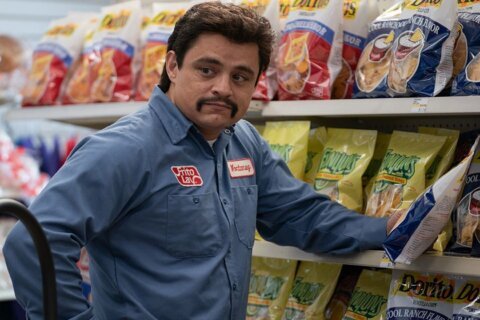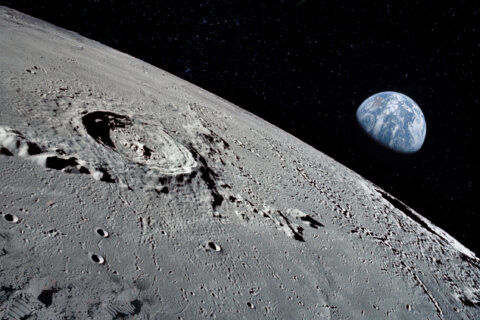Jason Fraley, WTOP Film Critic
WASHINGTON – February is Oscar month, but it’s also Black History Month. What better time for “The Help” to recall Mark Twain’s wisdom: “History doesn’t repeat itself, but it does rhyme.”
Just as Steven Spielberg adapted Alice Walker’s “The Color Purple” a quarter century ago, writer/director Tate Taylor takes Kathryn Stockett’s black-and-white bestseller and turns it into a silver-screen meditation on race relations. While Whoopi Goldberg and Oprah Winfrey lost their Oscar bids for “Purple,” it’s shaping up to be a fine Oscar night for Viola Davis and Octavia Spencer of “The Help,” likely to win Best Actress and Best Supporting Actress, respectively.
The film explores African American house maids haunted by a “separate but equal” existence in 1960s Jackson, Miss. The sassy Minny Jackson (Spencer) serves the mean-spirited Hilly Holbrook (Bryce Dallas Howard), while lending a hand to the erratic Celia Foote (Jessica Chastain). Meanwhile, the strong-willed Aibileen Clark (Davis) is busy raising neglected white children, teaching them three things: “You is smart. You is kind. You is important.”
Their lives are changed when they meet Skeeter Phelan (Emma Stone), a young white woman who sees through the town’s bigotry and is determined to write a best-selling book from the point of view of “the help.” One by one, she interviews the black maids of the town, pitching their stories to a New York publisher (Mary Steenburgen) as the anti-“Gone with the Wind.” “Margaret Mitchell glorified the mammy figure, who dedicates her whole life to a white family,” she says. “But nobody ever asked mammy how she felt about it.”
The film is inspirational, but far from groundbreaking. While “To Kill a Mockingbird” (1962) changed race relations during the Civil Rights Movement, “The Help” can only hope to recreate it. Thus, historians will view Atticus Finch like Neil Armstrong, taking one small step for humanity, and treat “The Help” like one of NASA’s final flights before retiring the space program. Indeed, history shines less brightly on a film released *during* the Obama administration than one that inspired Barack and Michelle Obama on their first movie date. I’m talking Spike Lee’s “Do the Right Thing” (1989). Now there’s a film on race relations that will knock your socks off.
I suppose we need this repetition to remind us how fresh our racial scars truly are. This is America just 50 years ago, folks, and viewers of various political stripes will be shocked to see white women writhing in bladder pain to avoid having to use the same bathroom as black women. Watching “The Help,” we realize that notions of “separate but equal” very much remain in segments of today’s society. What to do about it is where the politics kick in. As Davis said at the SAG Awards, “The stain of racism and sexism is not just for people of color or women. It’s all of our burden. All of us. And we absolutely, I don’t care how ordinary you may feel, all of us can inspire change.”
“The Help” benefits as a post-“Mad Men” social commentary. If only it were that subtle. While Taylor provides impressive camera moves through the halls of old plantation homes, there are one too many blatant cuts to “important objects,” like a JFK portrait on the wall. Sometimes it’s more artful to have the objects hanging symbolically in the background without drawing blatant attention to them (film academics call this “mise-en-scene”). Taylor clearly has it in him, like the heartbreaking shot of three freshly-planted shrubs on Chastain’s lawn. I just wish we saw that side of him more often.
Still, Taylor deserves enormous credit for the casting and coaching of three Oscar-nominated actresses. Davis is the favorite to win Best Actress, keeping her pain buried just beneath the surface but ever ready to have it come bursting out. Spencer is a lock for Best Supporting Actress, hilarious as the woman who “never burns her fried chicken” and bakes a “chocolate” pie that raises the bar on “American Pie” (1999). Chastain rounds out the Oscar-nominated trio as a more erratic January Jones, a porcelain blond in a phony post-war suburbia. Ironically, it’s not her best performance of the year. That would be “The Tree of Life.”
Even the unnominated performances are worth mention. Emma Stone continues to grow after a string of mainstream hits in “Superbad” (2007), “Zombieland” (2009) and “Crazy, Stupid, Love” (2011). Bryce Dallas Harper (“The Village,” “50/50”) is unforgettable as a real Nurse Ratched type. And Sissy Spacek elevates Spencer’s laugh-out-loud comedy. Together, the deep cast creates a deeply moving depiction of the Deep South, earning Best Ensemble Cast at the SAG Awards.
Enjoy the film for its heart, its inspiration and its racial reminders. Just realize it’s a movie you’ve seen many times before. To paraphrase Davis: “The film is kind. The film is smart. Its just not that cinematically important.” The public gives it an 8.0 on IMDB. The critics give it a 76 percent on Rotten Tomatoes. Calling it from both sides of The Film Spectrum, I’m giving “The Help” 3 out of 4 stars.
Join WTOP for an in-depth look at all nine Best Picture nominees every Wednesday and Friday until the Academy Awards on Feb. 26. Check out our Best Actor and Best Actress predictions.
Read more from WTOP Film Critic Jason Fraley by clicking “Fraley on Film” under the “Living” tab above, and check out his blog, The Film Spectrum.
(Copyright 2012 by WTOP. All Rights Reserved.)








